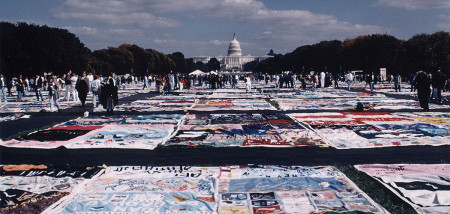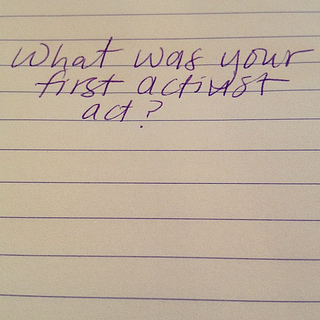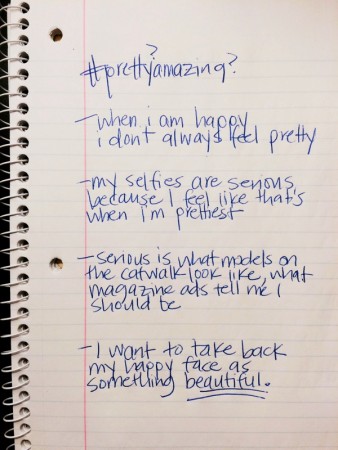NB: For this post, I recommending physically clicking on the photos to see them at their full size. You won’t be disappointed.
Growing up in the 80s, we were all terrified by AIDS, even though, at that time, our chances of getting it as tweens and early teens was pretty nil. But the unknowableness of the disease made it terrifying. This photo came to our cultural consciousness from the pages of LIFE magazine in 1990.
I gave Ryan White a hug at a church function. He was a hugger, of course, so this was totally okay. I think it was the first time I truly realized that you could give with your presence, your attention, your touch. After all that we had heard on the news with fear mongering, hearing the reality straight from the teen’s mouth and having him stand in front of us, it seemed like the only thing we could do. To show him that we weren’t afraid, to show others there was no reason to be afraid, and to show ourselves that there was a real person in front of us. And sometimes when we’re farther afield, it feels like making something is all we can do.
Often times when people ask me about craftivism, I mention the AIDS quilt* as an example, because everyone knows the AIDS quilt! Its presence has helped ease the stigma of AIDS and HIV. Its presence has helped create dialogue of all sorts, from family members who created the squares to visitors walking among the squares to people viewing photos of the squares, it helped start the conversation about AIDS. It moved all of us from being too frozen to do anything to literally giving us something to talk about. A literal quilt.
From a wonderful piece on the AIDS quilt by WBUR, here is a bit about its humble beginnings:
“My political cronies said it couldn’t work,†Jones told The San Francisco Chronicle in 1996. “I always knew it would be successful.â€
The idea had come to Jones during a 1985 march to remember Milk and San Francisco Mayor George Moscone, who were both murdered by a gunman at City Hall in 1978. Jones asked participants to carry signs featuring the names of San Franciscans who had died from AIDS. At the end of the procession, they taped the signs to the walls of the San Francisco Federal Building. The patchwork look reminded Jones of a quilt.
In June 1987, the first 40 panels of the AIDS Quilt were hung outside San Francisco City Hall. “We were founded to remember their names and to advance a movement,†Rhoad says. “We were founded by a group of grassroots activists to transform the conversation from statistics, the other, all the things that were driving the conversation in the ‘80s.â€
The article continues to say that the quilt “honors 96,000 people” and that “they get a new panel almost every day.”
Amazing, huh?
Dialogue was the reason why I started craftivism in the first place. To highlight how what we make with our hands can start a conversation that we may not be able to otherwise put into words. And this, to me, is the most important thing about craftivism. The thing I’m the most proud of, knowing that in making craftivist pieces we are creating conversations that may not have otherwise happened. As craftivists, we are allowing our crafts to have a life beyond utilitarianism and aesthetics, we are allowing craft itself to enter the conversation.
You may be one person or 96,000 to contribute to your project or see your work, and that’s okay, because you started a dialogue with someone. Someone (hopefully!) put the connection together about the medium and the message and why they fit together. And as I talked about last week, it’s the you element that is the most important here.
Because often craftivist pieces are about subjects that we find difficult to talk about. Race, illness, class, harassment, assault, and more. All issues that are involved and not for bus stop chatter. All issues that we talk about amongst people that we know. All issues that are sticky and tricky and full of weight and frustration and layers. These conversations get caught in our throats and make our voices quake. Yet, when we have a craftivist piece about the issue, we can go into it sideways by explaining the process or aesthetics or reasoning.
I guess in a way, you could say that for craftivists, our pieces are literally our shields. Pieces of armor that deflect those who want to hurt us. If necessary, we can hide behind them. But more often than not, it is their very presence that gives us courage to go into battle. We know it will cushion any possible verbal blows and give us conviction with its coverage.
And with each dialogue we start, we create a new beginning, a new way of understanding. Yes, there may not be agreement, but that doesn’t mean something valuable hasn’t happened. You started the hard conversation. Your work opened the door to a back and a forth, instead of a one-way lecture.
Over the past few days, pieces (here and here) have come out about a new issue of the Vangardist that was literally printed with the blood of HIV+ people. Talk about helping people work on their own feelings about AIDS! How many dialogues (both with others and internal) were started because of this? Amazing!
So, as the godmother of craftivism, I say to you, if you take nothing else away from me or craftivism itself, take away that your acts of craft are powerful, the dialogues you start are important, and your willingness to create them is immeasurable.
*If you’d like to read more about the AIDS quilt and craftivism, LJ Roberts’ essay in Craftivism: The Art of Craft and Activism is about just that.






